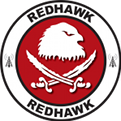Base Component Members
This section provides an overview of members available to the component class. There are four kinds of members: ports, properties, domain awareness, and network interface.
Ports
Data flow into and out of components is accomplished through the use of ports. Ports are described as being either a provides (input) or uses (output) port. This naming convention is often viewed as counter-intuitive, so an explanation is in order. Ports are RPC interfaces to a component. An input port, therefore, provides functionality that can be used by an output port.
REDHAWK contains a variety of standardized interfaces that facilitate interoperability. These interfaces are implemented by ports. When a port is selected in the component generation wizard in the REDHAWK IDE, code to implement these interfaces is automatically generated.
Irrespective of direction, a port is accessed as a member of the component’s base class. Assuming that a port called myport of any interface exists in the component, it is accessed in the following ways in C++, Python, and Java, respectively:
this->myportself.port_myportthis.port_myportSee Standardized Data Interfaces for details on how to use ports for sending or receiving data.
Properties
Much like ports, properties are available to the component through generated members to for the component’s base class. The property is found through the property’s name (if it has one) or its ID. For example, if a property is defined with an ID of foo and a name of abc, it would be accessed in the following ways in C++, Python, and Java, respectively:
this->abcself.abcthis.abcIf the property does not have a name defined, then it would be accessed in the following way in C++, Python, and Java, respectively:
this->fooself.foothis.fooNote that no automated check is performed on the code generation to avoid a name collision between properties or ports.
Enumerations
simple properties can have enumerated values, which associate symbolic names with values. Code generation creates constants for these values, allowing the component developer to use the symbolic name instead of the literal value. For simple properties in struct or struct sequence properties, the generated constants are nested under the name of the struct.
C++
In C++, the generated constants for enumerations are static variables in nested namespaces, under the top-level namespace enums:
enums::simple::LABEL
enums::structprop::field::LABEL
enums::structseq_struct::field::LABELEnumerated values for simple properties are in the component base class header, while those in struct or struct sequence properties are in struct_props.h along with the struct definitions.
Java
In Java, the generated constants for enumerations are public static variables in nested static classes, under a top-level class named enums:
enums.simple.LABEL
enums.structprop.field.LABEL
enums.structseq_struct.field.LABELThe enums class is a static nested class in the component base class.
Python
In Python, the generated constants for enumerations are class attributes in nested classes, under a top-level class named enums:
enums.simple.LABEL
enums.structprop.field.LABEL
enums.structseq_struct.field.LABELThe enums class is imported from the component base class module.
Domain Awareness
Each component has two members that provide a reference to the domain and application in which the component is operating. To retrieve the Domain Manager and Application, access the member functions getDomainManager() and getApplication(), which return a DomainManagerContainer and ApplicationContainer, respectively. DomainManagerContainer has the member getRef(), which returns the CORBA pointer to the Domain Manager object. ApplicationContainer has the member getRef(), which returns the CORBA pointer to the Application object.
In the case of devices, instead of getApplication(), the base class contains getDeviceManager(), which returns a DeviceManagerContainer. The DeviceManagerContainer has the member getRef(), which returns the CORBA pointer to the DeviceManager object.
Network Interface
If a component contains a dependency against any member of GPP’s nic_allocation allocation property, then the framework will, upon deployment, make sure that those network resources are made available to the component. Whichever NIC statisfies the allocation requirement is fed to the component, and it is made available to the developer through the getNetwork() member, which returns a NetworkContainer. NetworkContainer has the member function getNic(), which is the string name of the NIC that satisfied the requirement (i.e.: eth0).
Note that if the network dependency is declared for any one component, that component’s deployment is made to the core(s) that are closest to the NIC on the processor. This happens automatically with no need for additional input from the deployer.
 REDHAWK
REDHAWK